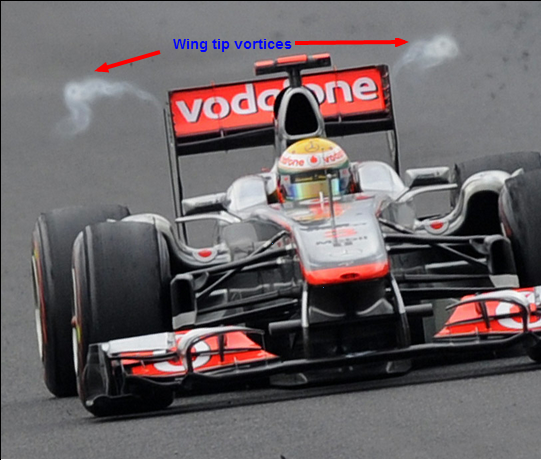Some words from me, copy-paste from my blog:
Vortex in aerodynamics is any fluid or gas formation which usually has turbulent flow. What is typical for a vortex is the low pressure at its core, which rises progressively as we go away from the center to the outer edges where the pressure is very high. This is one of the reasons why aero people generally would like to avoid creating vortices - the high pressure would mean lower velocity of the surrounding layers, thus drag.
Other reason why vortices are generally avoidable is because of the possibility of "vortex burst" - this is the moment where the formation literally breaks and creates even more turbulent and uncontrollable flow. This is less likely to happen with weak vortices and respectively, usually seen with strong vortices, where the core sometimes disintegrates into few smaller vortices.
The reason why, however, vortices are sometimes deliberately induced is to wake or re-energize the boundary layer - the small portion of air which is very close to a surface, where due to skin friction and resistance the velocity of the air is very low. We would like, as aero people, to have less drag, so we create a vortex generators - small winglets, which often induce normally rotating, weak vortices. The trade-off is the smaller portion of drag induced due to the shape of the device, but it's more beneficial in terms of L:D coefficient.
In F1 world we often hear the term referred to as "wingtip vortices", as seen on the picture below. The reason for creation of such formations is the natural tendency of the air to move from high to low pressure regions, being a continuous function. Here, since we operate with negative lift (downforce), the direction of the vortices is upwards.
These wingtip vortices, on the other hand, create lift-induced drag and drag is unwanted in any of its forms in motor sports, where speed matters.







